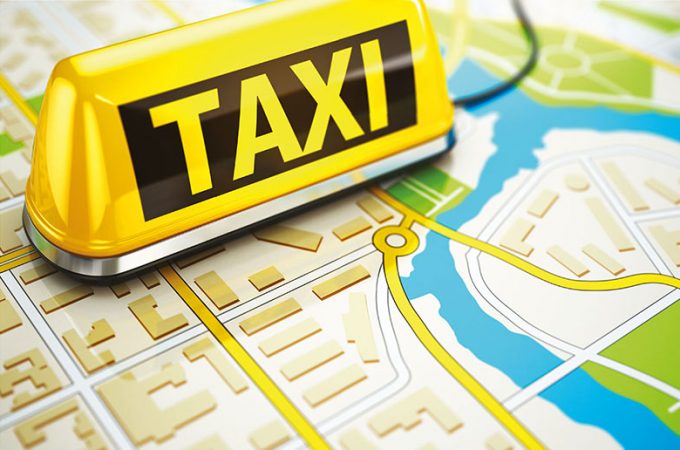CONNECTED WORLD
MOTORING MILLENNIALS
Guillaume Saint treads the path that car manufacturers are taking to attract millennials

Once upon a time, baby boomers were teenagers, the American dream was gold and owning a car was the ultimate status symbol. The motor industry enjoyed limitless enthusiasm from its customers since so many important moments
in their everyday lives depended on the freedom provided by the vehicles they owned.
Fast forward to today… the world of artificial intelligence (AI), globalisation and urbanisation. Most young urbanites are tech obsessed, air pollution is a health threat and connections are made through smartphones. Owning a car lacks the appeal it once had; as far as millennials go, the passion lies firmly with technology – as one sees in their interest in pay per use models, immediacy and the sharing economy.
All of this is compounded by the limited spending power of some millennials. The rising cost of city living means payments must be prioritised – often in monthly rhythms. As a result, among this audience, the desire to own has been replaced by the need for access to goods and services.
Those who are in their 20s tend to struggle to make ends meet every month, prioritising instant pleasure and sacrificing costly purchases for more flexible models like renting or car sharing.
Yet, these issues are creating exciting opportunities.
The ascendancy of the sharing economy has led to an increasing number of carpooling services, presenting opportunities for new brands and platforms to expand, as well as democratising access to cars. Advancements in smartphone technology mean that mobiles can now be integrated with cars and car sharing services.
So the question is: how can motor and mobility brands meet the needs of tech savvy youngsters who are living ‘in the moment’?
HYPER CONNECTIVITY Today’s hyper connectivity has delivered a deluge of fresh mobility solutions.
The ‘on demand economy’ has seen swarms of younger people adopting services like e-hailing through the likes of Uber or car sharing courtesy BlaBlaCar and car2Go.
In fact, mobility studies reveal that almost half of the 18 to 29-year-old age group are keen to share their cars compared to only one in three of those over 40 while 75 percent of urbanites are using mobility apps to organise or guide their journey.
Moreover, smartphone first platforms are also being developed by automotive brands like the FordPass. These are innovative one stop mobility apps that enable people to instantly find the right mobility solution the moment they need it. They represent a growing market that focusses on car ‘usage’ instead of ownership, offering brands an opportunity to begin building a relationship with young people much earlier than traditional car ownership permits. And BlaBlaCar goes a step further, leveraging a key moment for this audience by matching people who need a ride with those offering one.
MILLENNIAL PACKAGES Hyper connected millennials have very different needs to affluent baby boomers or their Generation X parents. Motor brands that design with these needs in mind and promote their product in a way that appeals to younger people will reach this cohort.
Indeed, demonstrating a car’s connectivity features when presenting it improves sales and usage especially among a younger audience.
Smaller, digitally enabled cars for cities mean that younger people can stay connected as they drive, meeting their infotainment needs from sat-nav to Spotify the moment they arise. Among the main benefits of connected cars, between an improved and safety enhanced driving experience, and infotainment, the latter appeals most to the younger audience.
Payment models are changing too since younger people tend to measure affordability on a monthly basis rather than as a total price to pay. Vehicle brands are appealing to this mindset by extending leasing programmes for car usage almost everywhere, breaking the custom of ‘buying a car to own’ and replacing it with a monthly payment model demonstrating the impact this audience is having on the motor industry.
DIGITISED SHOWROOMS For car buyers, the path to purchasing has evolved rapidly in the last decade with digital touchpoints challenging the role of dealer showrooms as the strongest influence on buying decisions.
Accordingly, our Connected Life study reveals that 72 percent of 16 to 30-year-olds have made up their minds before entering a showroom to buy a new car. Automotive brands must creatively reach people in other ways by anticipating and tapping into the moments that matter ahead of a purchase.
They introduced a virtual showroom called ‘Live Store,’ which allowed potential customers to view vehicles close up from the comfort of their sofas and ask questions from an expert wearing an eye level camera. The device also enabled them to view the accessories available on-screen and book a test drive immediately. The results were striking with 67 percent of video chats leading to test drives.
Moving further down the purchase journey, Hyundai has gone a step further, allowing customers to buy a car with a simple click online. This innovation appeals to the millennial hunger for instant gratification in an on demand economy.
MASSIVE OPPORTUNITIES The motor industry has responded to changing customer needs and a serious challenge from technology with a period of intense innovation.
From Nissan’s consumer to consumer (C2C) online forum that responds to potential Leaf buyers’ questions about the electric vehicle to Chrysler’s ‘co-creation portal’ designed by millennials for millennials, motor manufacturers are rethinking product design and marketing for a tech savvy generation.
Brands must carefully define and target the key moments of interaction with these new audiences, responding to how younger people live, what they value and how they spend their money. Motor bands must not be afraid to push the boundaries of their business models with pioneering products and services that meet these changing needs.






Leave a comment